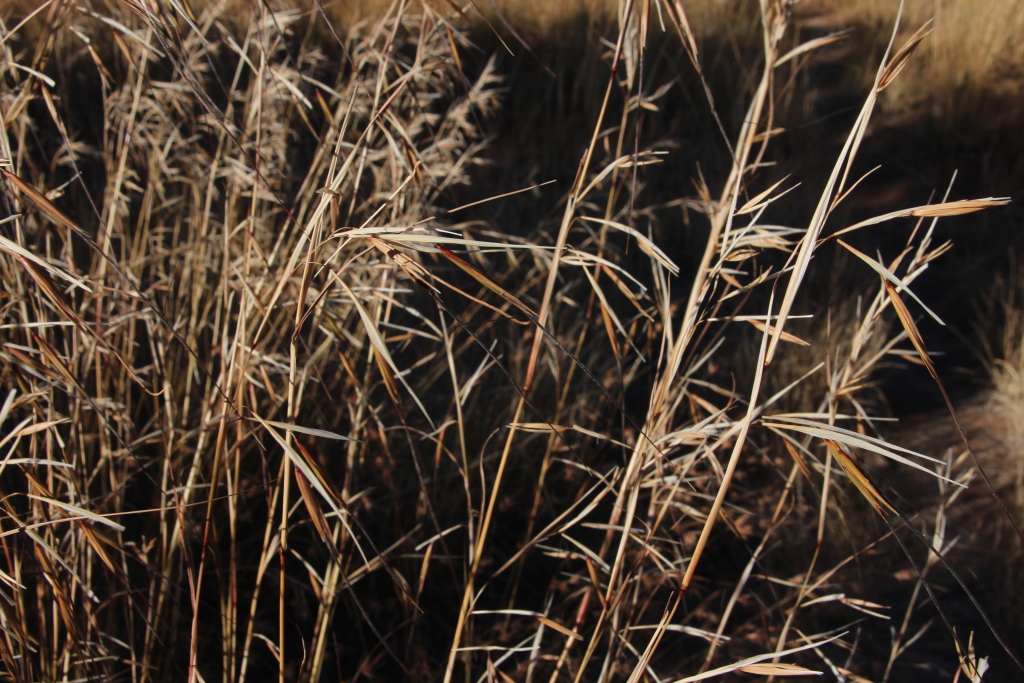Themeda avenacea
(F.Muell.) Maiden & Betche Oat Kangaroo-grassShortly rhizomatous perennial, woolly at base, culms erect, to 2 m high or more, often glaucous; leaves (except basal sheath) glabrous, scabrous or hairy; blade usually closely folded, to 60 cm long and 3 mm wide; ligule laciniate, 2–7 mm long, glabrous, but bordered by long hairs. Inflorescence 15–50 cm long, the clusters loosely pedunculate, with 5–10 racemes, each raceme c. 20–26 mm long (excluding awn), about as long as its spathe, with a peduncle 1–2 cm long between the spathe and the lower spikelets; involucral spikelets male, 15–20 mm long; fertile spikelet c. 10 mm long, its glumes hardened, silky, brown-pubescent all over, callus-like pedicel elongate, with silky brown hairs; sterile lemma about two-thirds as long as glumes; fertile floret inconspicuous, continuous with base of stout, rusty, once- or twice-bent awn, 5–10 cm long; palea usually lacking; pedicellate spikelets usually male, resembling those of involucre. Flowers mostly Nov.–Feb.
MuM, VRiv, EGL. Also WA, NT, SA, Qld, NSW. Confined to inland districts. Formerly regarded as naturalised in Victoria, but now perceived as a rare native whose habitat has been severely reduced. Known from scattered sites in north-central Victoria (e.g. Tennyson, Boort, Wycheproof areas) on heavy soils supporting grassy woodland.
Walsh, N.G. (1994). Poaceae. In: Walsh, N.G.; Entwisle, T.J., Flora of Victoria Vol. 2, Ferns and Allied Plants, Conifers and Monocotyledons, pp. 356–627. Inkata Press, Melbourne.
 Spinning
Spinning


